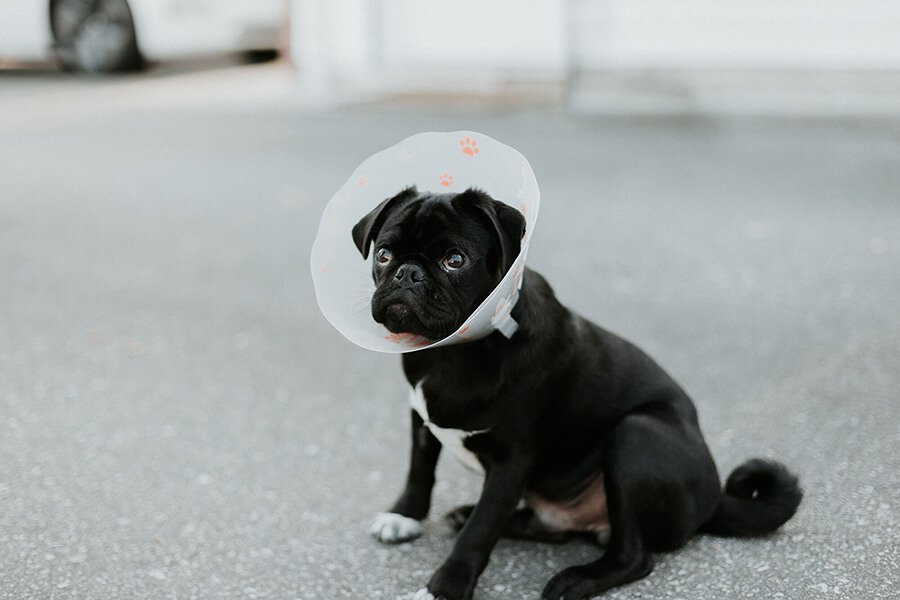

Steer Clear of Incision Site
So, your pet had surgery and now it’s time to keep that busy mouth away from the incision site. It can be a struggle to guide them away from their stitches, but choosing the right cone and properly sizing it can make all the difference. In this article, we’ll discuss which cone might be the right choice for your doggo as well as offer detailed suggestions on getting a secure fit for dog cones.
What Are Your Options?
First off, let’s gather the choices you have. These include:
- Plastic Elizabethan Cone
- Comfy Cone
- Kong Cloud
- Bodysuit
Elizabethan Cone
This is the cone you’re probably the most familiar with and that’s been around the longest. Advantages include easy cleaning, since it’s made of plastic which can easily be wiped off. A disadvantage is it’s not incredibly comfortable, given the material, which can also hurt you when your dog runs into your legs wearing an Elizabethan cone!
Comfy Cone
It’s right there in the name—this can be an alternative that’s a bit more cozy. The velcro allows for easy on and off and there are three sizing strips to help get a super snug fit. The comfy cone is softer and more flexible and can even be worn upside down in some situations!
Kong Cloud Plastic
The pillow-like Kong-Cloud cones are best suited for dogs with snouts too short to reach their incision site. However, it’s not suitable for dogs with a regular-sized snout because they can push right past the edges and reach their incision.
Bodysuits
Bodysuits can be a great choice if the patient is older, has a very calm demeanor, and doesn’t lick as a typical behavior. Another use is when the patient is very small and a traditional cone may impede their mobility. Think: a tiny pup that will be weighted down by a cone.
How Should It Fit?
It’s important that the cones fit just right so it can do its job properly. Dogs can be experts at working around an ill-fitting cone and still reach their incision site. For the traditional plastic Elizabethan cones as well as the more durable Comfy Cones, they need to be sized when the dog’s neck is fully extended, and the cone must be pushed down on the dog’s neck so that it is far back and flush with the collar bones. This ensures there won’t be extra space to wriggle past and bother a surgical site. You don’t want it to be too tight, either, so check by placing two fingers in between the cone and your dog’s coat.
Dog Cone Safety
Many dogs may have trouble getting around when they first arrive home with the cone. A VCA article suggests: “You can ease the transition by keeping your dog in a confined space where there are no small movable objects such as stools, chairs, and tables which would move if knocked.” If your dog needs to go outside, supervise—there’s a risk of entanglement with plants that could cause injuries. Walks are still okay, if your dog cooperates and your veterinarian has approved..
To Each Their Own
In the end, each dog is different and recovery can also vary from one pooch to the next. If you have a dog that tends to be a bit of an escape artist, you might want to talk to your veterinarian to discuss some strategies to keep them away from their stitches and help your pet heal and recover.
Keep it Around
A helpful note for you while we’re at it: Don’t get rid of the cone when you think you’re finished with a spay or neuter, because they can be handy to have around during future surgeries or procedures. Other helpful times to put dogs in cones can include during an allergy flare-up or while they have a hot spot that’s causing painful skin irritation.
